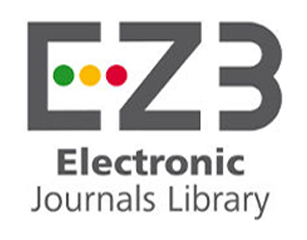INNOVATIVE ASPECTS OF MANAGEMENT OF MODERN HIGHER EDUCATION — AN IMPORTANT BASIS FOR ITS SUCCESSFUL REFORMATION IN THE ERA OF TRANSITION TO INFORMATIONAL SOCIETIES
DOI:
https://doi.org/10.32689/2617-2224-2019-17-2-200-207Keywords:
education, higher education, innovations in the education system, innovative components of the transformation of modern higher educationAbstract
The main innovative aspects of management of modern higher education, which are caused by the transition of societies from post-industrial to informational status, are analysed. The article substantiates the provisions concerning: a) the nature and specifics of radical modernization of education in general and higher education directly; b) the role and significance of innovations in the management of institution of higher education; c) new approaches to the formation of public administration in the development of higher education; d) human dimension in the transformation of higher education and its management. It is noted that innovation changes in higher education are ambiguous and can be classified by such a system: a) by the real level of novelty; b) on the peculiarity of their implementation (one-time, systemic, diffuse, etc.); c) in the state of implementation successful or completed, incomplete, etc.). The emphasis is on the fact that there are many different theories of the development of education in general and higher education directly: the theory of selective development; theory of resource membership; theory of structural and situational development; the theory of neoinstitutional development; phenomenological theory and others. The thesis on state administration of higher education as an organized independent part of the overall process of public administration is substantiated, which includes the development, adoption and practical recommendation of organizational, coordinating, regulatory, motivational, controlling influence on the system of higher education, its development and progressive functioning. Attention is drawn to the fact that in the process of analysing the innovative aspects of the development of higher education three possible theoretical and methodological approaches are used: functional, technological, theoretical. It is substantiated that there is every reason to point out that “development of education” is a much wider, voluminous process than simply “updating of education”, because because of it education acquires qualitatively new features. The same applies to the term “modernization of education”, or the term “education update”, under which we most likely have to see some aspects of education.
References
Семенець-Орлова І. А. Державне управління освітніми змінами в Україні: теоритичні засади: моногра- фія / І. А. Семенець-Орлова. — К.: ЮСПТОН, 2018. — 42 с.
Гансон М. Керування освітою та ор- ганізаційна поведінка / М. Гансон. — Л.: Літопис, 2002. — 413 с.
Фуллан М. Сили змін. Вимірю- вання глибини освітніх реформ / М. Фуллан. — Л.: Літопис, 2008. — Ч. 1. — 271 с.
Фуллан М. Сили змін. Вимірю- вання глибини освітніх реформ / М. Фуллан. — Л.: Літопис, 2008. — Ч. 2 (Продовження). — 164 с.
Терепищий С. Сучасні освітні ланд- шафти / С. Терепищий. — К.: Фе- нікс, 2016. — 321 с.
Державне управління у сфері освіти: глосарій з дисциплін магістерської програми за спеціальністю “Дер- жавне управління у сфері освіти” / авт. кол.: Н. Г. Протасова, В. І. Луго- вий, Ю. О. Молчанова та ін.; за заг. ред. Н. Г. Протасової. — К.: НАДУ, 2013. — 432 с.
Власенко О. Інноваційний менедж- мент / О. Власенко. — К.: Знання, 2011. — 342 с.
Феномен інновацій: освіта, культу- ра: монографія / за заг. ред. В. Кременя. — К.: Педагогічна думка, 2018. — 19 с.
Законодавство України у сфері на- укової, науково-технічної та інно- ваційної діяльності (Верховна Рада України. Комітет з питань науки та освіти / М. Шевченко, Б.Чижев- ський, С. Семанюк та ін. — К.: Парламентське вид-во, 2013. — 28 с.
Реформування освіти в Україні: державно-управлінський аспект: навч.-наук. вид. / Н. Протасова, В. Луговий, Ю. Молчанова та ін.; за заг. ред. Н. Протасової. — К.: НАДУ, 2012. — 321 с.











